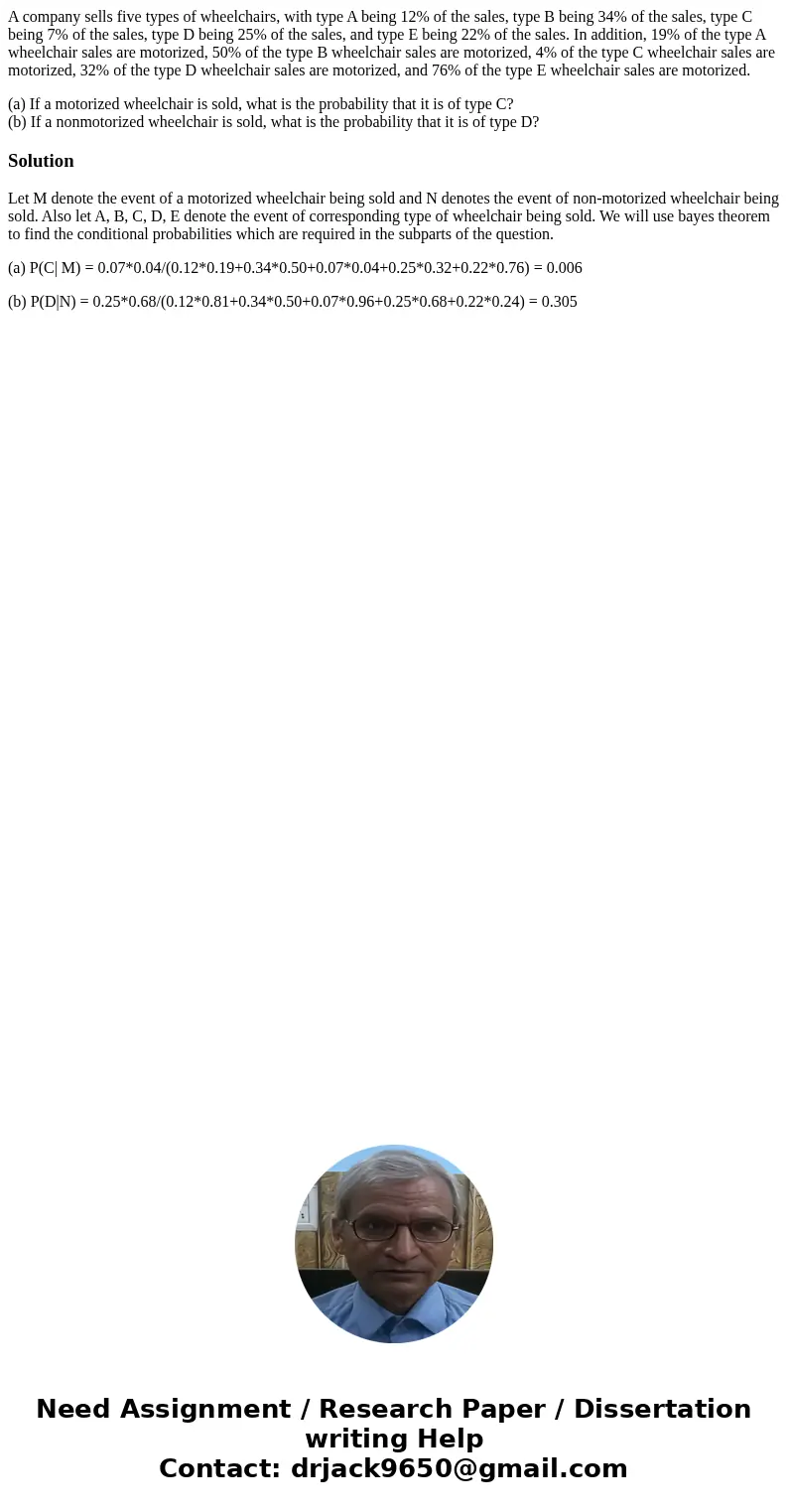A company sells five types of wheelchairs with type A being
A company sells five types of wheelchairs, with type A being 12% of the sales, type B being 34% of the sales, type C being 7% of the sales, type D being 25% of the sales, and type E being 22% of the sales. In addition, 19% of the type A wheelchair sales are motorized, 50% of the type B wheelchair sales are motorized, 4% of the type C wheelchair sales are motorized, 32% of the type D wheelchair sales are motorized, and 76% of the type E wheelchair sales are motorized.
(a) If a motorized wheelchair is sold, what is the probability that it is of type C?
(b) If a nonmotorized wheelchair is sold, what is the probability that it is of type D?
Solution
Let M denote the event of a motorized wheelchair being sold and N denotes the event of non-motorized wheelchair being sold. Also let A, B, C, D, E denote the event of corresponding type of wheelchair being sold. We will use bayes theorem to find the conditional probabilities which are required in the subparts of the question.
(a) P(C| M) = 0.07*0.04/(0.12*0.19+0.34*0.50+0.07*0.04+0.25*0.32+0.22*0.76) = 0.006
(b) P(D|N) = 0.25*0.68/(0.12*0.81+0.34*0.50+0.07*0.96+0.25*0.68+0.22*0.24) = 0.305

 Homework Sourse
Homework Sourse